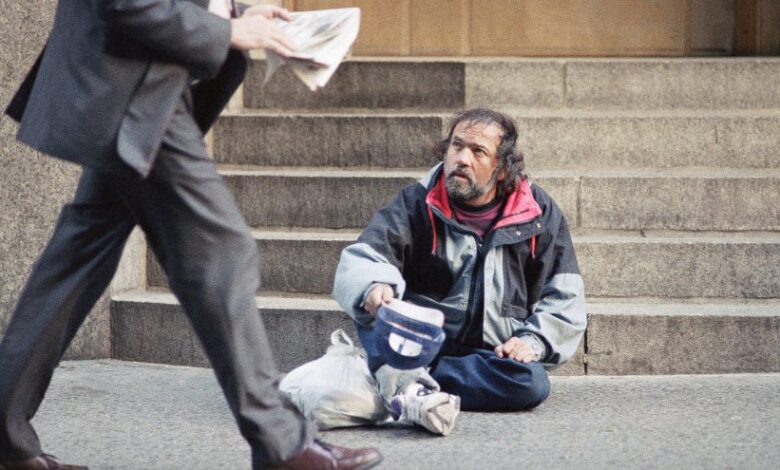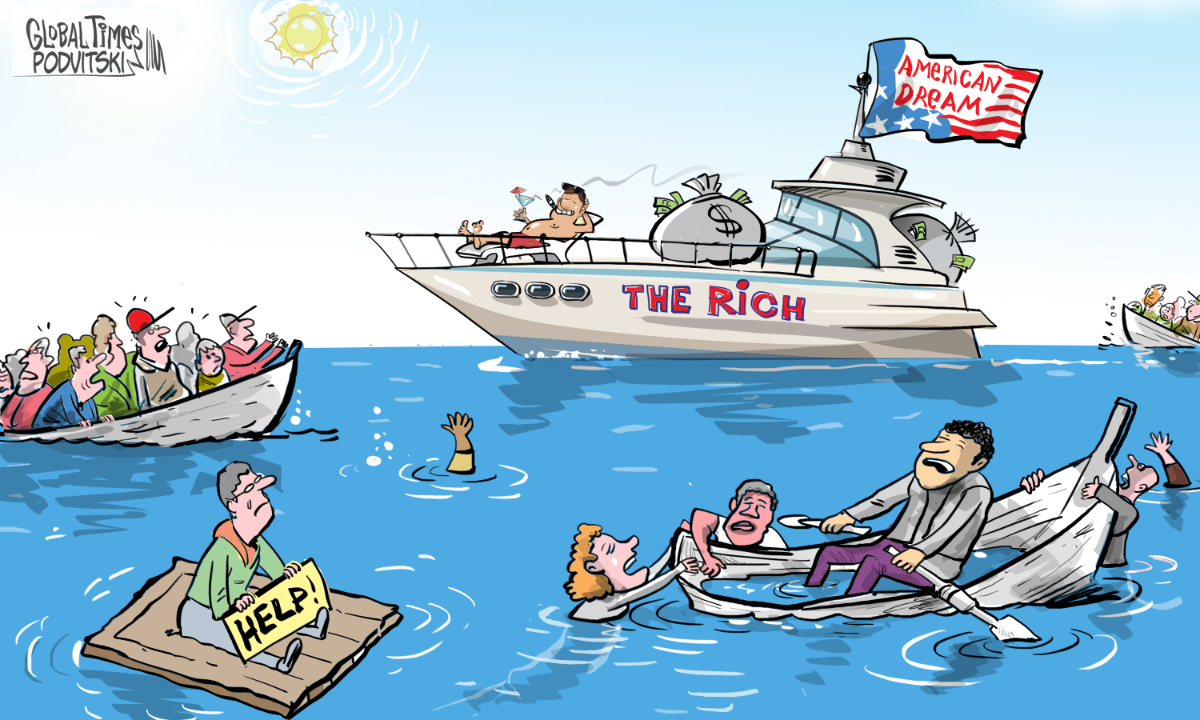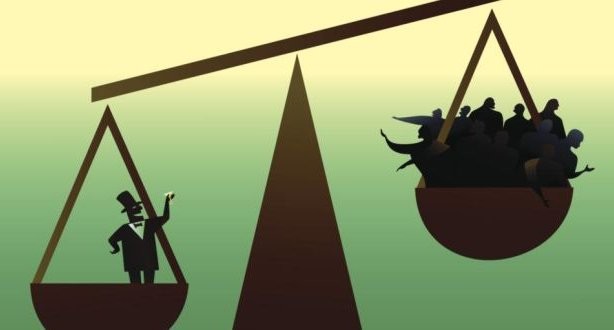Questioning The History, The Looming Trillionaire, Oxfam’s Stark Warning On Global Wealth Inequality And The Indian Story Of Poverty Reduction, NITI Aayog
The chasm between the rich and the poor has long been a subject of concern and scrutiny, with recent revelations from Oxfam International adding new urgency to the discussion. As the world grappled with the aftermath of the coronavirus pandemic, the organization's annual assessment suggests that the global elite is on the brink of producing the first trillionaire within the next decade. This stark prediction spotlights a historical trend- the rich are getting richer while the poor face deepening economic challenges. Studying the historical context reveals that this phenomenon is not a recent development but a persistent pattern that has endured through the ages. A recent report from NITI Aayog seems to challenge this notion, suggesting a significant decline in multidimensional poverty in the country. But is this a comprehensive reflection of the ground reality, or does it merely conceal the complexities inherent in India's socio-economic landscape?

Oxfam International has declared that the world may witness its first trillionaire within the next decade.
This (alarming) prediction comes as part of the anti-poverty organization’s annual assessment of global inequalities, coinciding with the annual gathering of political and business elites at the World Economic Forum in Davos, Switzerland.
Oxfam contends that the economic disparities between the ultra-wealthy and the majority of the global population have been “supercharged” in the aftermath of the coronavirus pandemic.
Oxfam’s interim executive director, Amitabh Behar, described the findings as indicative of the world entering a “decade of division.”
The report underscores a stark reality – while the top five billionaires have doubled their wealth, nearly 5 billion people worldwide have seen a decline in their economic standing.
Behar highlighted this disconcerting trend, emphasizing that to combat poverty effectively, more than 200 years would be needed. He ominously predicted the emergence of a trillionaire within the next decade, a person with a net worth of a thousand billion dollars.
What Does It Mean?
To put this into perspective, reaching the trillion-dollar milestone would confer a value equivalent to that of oil-rich Saudi Arabia. Notably, the report suggests that the next trillionaire might not even be currently featured on any list of the world’s wealthiest individuals.
Currently holding the title of the world’s richest person, Elon Musk boasts a personal fortune of nearly $250 billion, according to Oxfam’s figures derived from Forbes.
At the same time, the organization notes that nearly 5 billion people have become economically impoverished since the onset of the pandemic, particularly in developing nations lacking the financial resources to support their populations during lockdowns.
Oxfam attributes this growing wealth gap to a variety of factors, including the aftermath of the pandemic and the disproportionate impact of events such as Russia’s invasion of Ukraine in 2022, which led to soaring energy and food costs that disproportionately affected the poorest nations.
With Brazil hosting the Group of 20 summit, Oxfam sees an opportune moment to address these inequalities. Max Lawson, Oxfam’s head of inequality policy, emphasized the need for an “inequality-busting” agenda.
The organization proposes measures such as permanent taxation of the wealthiest individuals globally, more effective taxation of large corporations, and a renewed effort to combat tax avoidance.

History Repeats Itself
The notion of the rich amassing wealth at the expense of the poor is deeply ingrained in societal structures and economic systems, and the roots of this trend can be traced back centuries, reflecting the dynamics of power, privilege, and access to resources.
For example, in medieval societies, feudal systems consolidated wealth and landownership in the hands of a select few, giving rise to generational disparities.
The Industrial Revolution further heightened these divisions as the growing capitalist class accumulated unprecedented wealth while labourers faced harsh working conditions and meagre wages.
The early 20th century witnessed the rise of industrial tycoons, such as John D. Rockefeller, who was heralded as the world’s first billionaire in 1916, thus marking a turning point where the concentration of wealth reached new heights, setting a historical precedent for the accumulation of immense fortunes.
Over the years, economic crises, wars, and geopolitical events have shaped and reshaped the global economic landscape, influencing the trajectory of wealth distribution.

The Current Situation
In recent decades, globalization and technological advancements have played a pivotal role in widening the wealth gap.
The emergence of a globalized economy has allowed the affluent to exploit new markets and opportunities, often at the expense of marginalized communities.
The acceleration of technology, while fostering innovation and progress, has simultaneously led to job displacement and income inequality, further contributing to the divide between the rich and the poor.
The aftermath of the coronavirus pandemic has proven to be another catalyst for exacerbating these historical trends. Oxfam’s revelation that the fortunes of the five richest individuals have surged by 114% since 2020 highlights how economic shocks disproportionately affect the most vulnerable.
Lockdowns, economic downturns, and geopolitical events have hit developing nations the hardest, accentuating the disparities in their ability to weather such storms compared to their wealthier counterparts.
Also, the question of how generative AI will affect the job scene globally in the current context?

Questioning The Indian Story of Poverty Reduction – NITI Aayog
Is the widely accepted narrative of the rich getting richer and the poor getting poorer applicable to the Indian context?
A recent report from NITI Aayog seems to challenge this notion, suggesting a significant decline in multidimensional poverty in the country.
But is this a comprehensive reflection of the ground reality, or does it merely conceal the complexities inherent in India’s socio-economic landscape?
According to the NITI Aayog discussion paper titled ‘Multidimensional Poverty in India since 2005-06,’ India has ostensibly experienced a commendable 17.89 percent reduction in multidimensional poverty, from 29.17 percent in 2013-14 to 11.28 percent in 2022-23.
The paper asserts that Uttar Pradesh has emerged as a frontrunner, witnessing the most substantial drop in the number of poor individuals.
However, does this statistical improvement genuinely translate into an equitable distribution of wealth and well-being across the nation?
The report attributes this positive trend to various initiatives aimed at addressing the diverse dimensions of poverty. It claims that in the past nine years, 24.82 crore individuals have reportedly escaped multidimensional poverty.

Still, the question lingers – Does this statistical achievement genuinely capture the nuanced realities faced by the urban poor, a segment often overlooked in conventional poverty assessments?
The Multidimensional Poverty Index (MPI) utilized in the report is globally recognized, capturing poverty beyond monetary dimensions. Yet, does this methodology offer a comprehensive understanding of the challenges faced by those struggling in urban areas, where issues such as access to education, healthcare, and decent living conditions often intertwine with economic concerns?
The report highlights the exponential decline in the poverty headcount ratio between 2015-16 to 2019-21, indicating a 10.66 percent annual rate of reduction.
This contrasts with the period from 2005-06 to 2015-16, where the annual rate of decline stood at 7.69 percent. But, does this statistical progress truly align with the day-to-day experiences of those living on the fringes of society, grappling with the poverty trap?
The regional breakdown points to impressive numbers, with Uttar Pradesh, Bihar, Madhya Pradesh, and Rajasthan witnessing substantial reductions in poverty.
However, delving deeper into the realities of the urban poor raises critical questions about the inclusivity and sustainability of these gains.
Are the reported declines in poverty truly reflective of improved living conditions for all, or are they merely a statistical mirage masking the persistent challenges faced by the most vulnerable in India’s urban landscape?

The Last Bit, Oxfam’s report paints a troubling picture of a world increasingly divided between the super-rich and the rest of the population.
As global leaders convene in Davos and Brazil, the urgency of addressing these inequalities is underscored, with Oxfam sounding a clarion call for concrete actions to curb the concentration of wealth and alleviate poverty on a global scale.
As India seemingly marches towards its Sustainable Development Goals (SDG) target of halving multidimensional poverty, it becomes imperative to scrutinize the nuances of this narrative.
Is the reduction in poverty merely a numbers game, or does it genuinely signify an equitable and sustainable transformation in the lives of the poor? Because the answers to these questions may well reshape the narrative of poverty alleviation in India.
The historical validity of the rich getting richer while the poor get poorer is evident in the recurring patterns of wealth accumulation throughout history.
From feudal societies to the industrial revolution and the contemporary era, systemic factors and global events have consistently reinforced this troubling trend.
Oxfam’s warning about the impending trillionaire serves as a contemporary manifestation of this historical pattern, urging a critical examination of the economic systems and policies that perpetuate such stark inequalities.





